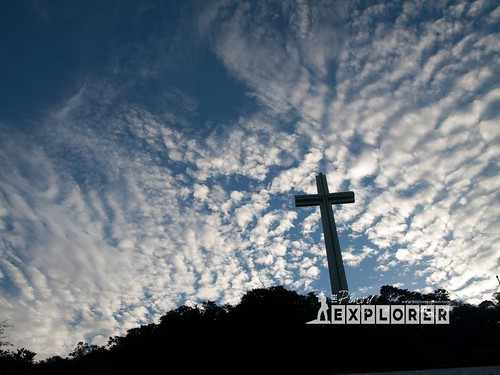
Stories Told
As a kid, I have always been excited about stories of the Japanese occupation. We would huddle up by the feet of my late father as he recollected their grueling but exciting life during the World War II.
As told, they were in their high school when the war broke. They had to stop schooling but were later accelerated after the war. They lived with meager means. While they had their houses still intact, they had to go underground in the dugouts built by their elders near the thick bamboo groves. They—young and old, men, women, and children—would scamper whenever they hear Japanese planes hovering above them, whenever there is shelling between Guimba and Muñoz, or when there are Japanese soldiers patrolling their barrio. They would stay for days under their dugouts which can hold up to 3 families. They cooked, slept and ate in this humble refuge under the ground. Their source of fresh air were hollow bamboo shafts hidden in the thick bamboo groves above them.
Moscuvado or panucha, or sinuklob or tagapulot in Ilocano dialect were their emergency daily fare. Rice was a luxury and they had to line up for rations.
He also told stories about my uncle Tinoy who was a sergeant of the USAFFE. If I remember it right, one of his legs was hit by a bullet, which made him limping for the rest of his retirement life--and that earned him a Purple Heart. Later did I realize that the laminated Purple Heart certificate hung on their wall that I have always been admiring as a kid was not just about a simple feat, after all. It was an honorable recognition of the bravery of the men who were wounded during the battle.
Then there was his next of kin, Aunt Aurea, who worked with the Filipino soldiers as a spy of sorts. The story about her was not clear. But I could vividly recall anecdotes that she would ride her horse and “patrol” between our town Guimba, and Muñoz to get information about the Japanese soldiers. The way it was told, she worked as a pseudo-spy for the Filipino soldiers who were keeping guard at the time. She would hide under traditional baro’t saya, acting as a common barrio folk, but actually wore denim under them.
There were many more stories told. But these are the two stories that I could still vividly recall. I could just imagine the travails and agony of life during the war—and this is because our town, Guimba was a “D3”—a part of a series of defense lines put up by General Douglas MacArthur
On a lighter note, it is good to know that my hometown, Guimba, has a place in Philippine history, after all.
Visiting Dambana ng Kagitingan
Inscribed in a huge tablet on the wall where it says:
On this ground, gallant men chose to die rather than surrender.is, needless to say, the most bitter and most heart-wrenching part of that history. At the same time, however, it is liberating a thought—that we, Filipinos, will choose to die for our freedom.
The visit to the Dambana ng Kagitingan was short but it was worth the trip. I did not even make it to the gigantic cross that stands on the top of Mount Samat [because it was already closing time].
With all the stories told, the visit to Bataan’s Dambana ng Kagitingan or the Shrine of Valor, made the shrine even more meaningful for me.
Here I could make a clear connection between common people’s tragedy, bravery and heroism, and love for the country during the war. I am neither a Marcos fan nor a loyalist, but if there is one Marcos legacy that is worth mentioning, it is this Shrine, which he built between 1966 and 1970.
With this, I am just proud to be a Filipino again. Images of the Dambana ng Kagitingan is all over the net. Be that as it may, I am glad to share some photos with you, just the same.
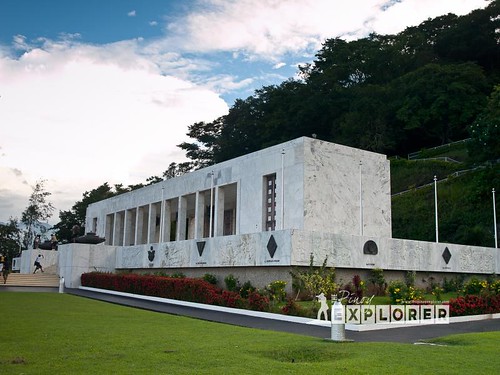 |
| The Collonade |
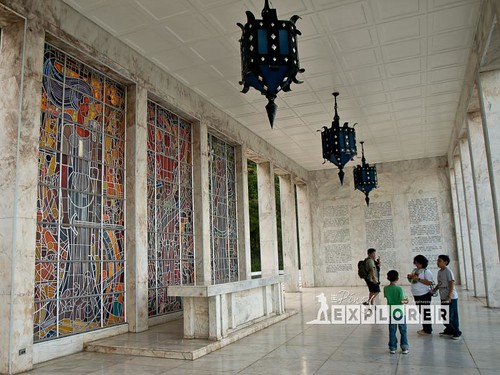 |
| The Altar with the stained glass murals by Cenon Rivera |
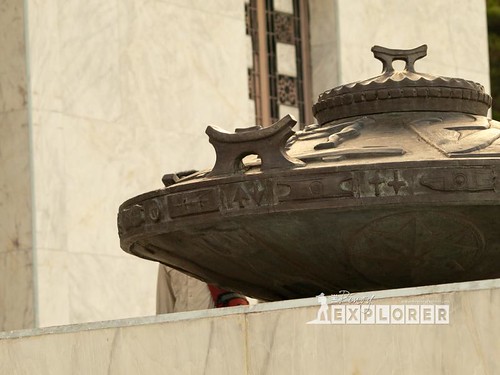 |
| One of the two urns on the top of the stairs, symbolizing 'eternal flame' |
 |
| One of the huge stained glass murals. |
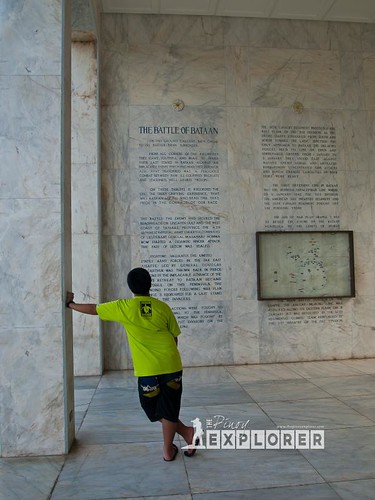 |
| The historical tablet |
 |
| A view from the Collonade |
 |
| The Memorial Cross and the Philippine Flag |
For the full description of the Dambana ng Kagitingan, visit Wikipedia.
Do you like this article? Like us on Facebook, too!

4 comments :
Reading your stories Sir Ding made me recall the stories being told to me by my grandma "sa tuhod" wherein everytime she hears explosions in our place during those times, she hides her children (including my late lolo). Until now, the Japanese has left marks in our barangay. There are old big nails punched on old trees at the woodlands and hilly portion of our place wherein it is thought to be a pattern in unlocking the location of the Yamashita treasure. I don't know if it is true but people "in power" are interested in the area considering it is not a good location for real estate or whatsoever and "one" powerful man in our place has acquired the land.
Now that's a piece of history. Napa-isip tuloy ako about my grandmmothers stories.
Salamat Edmar and Roniel!
Thanks, Manong Unyol!
Post a Comment